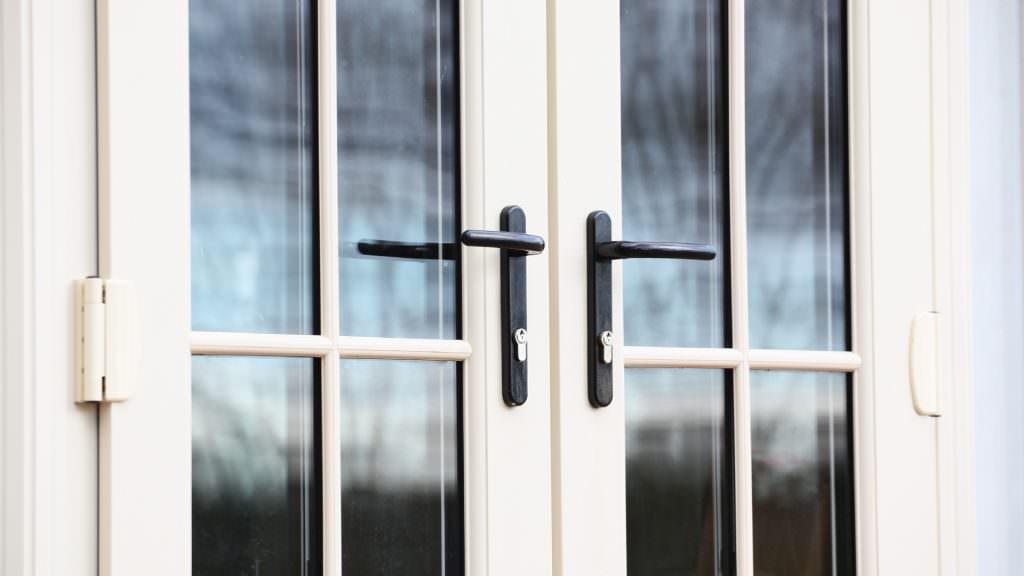Different Types of UPVC Window Handles and Their Uses

UPVC (unplasticised polyvinyl chloride) windows, handles are more than just accessories. They play a vital role in functionality, security, and aesthetics. The right handle makes a window easy to operate while complementing the style of the home.
With uPVC windows being one of the most popular choices in modern construction due to their durability and energy efficiency, understanding the different types of handles and their uses is essential for homeowners, builders, and renovators.
This article explores the various kinds of uPVC window handles available, their unique features, and the situations where each type is most suitable.
1. Espagnolette Handles (Espag Handles)
Description
Espagnolette handles, commonly referred to as espag handles, are the most widely used type for modern uPVC windows. They feature a spindle that fits into a multi-point locking mechanism within the window frame. The handle turns to engage or disengage the lock points, making them both secure and easy to operate.
Uses
Commonly fitted to casement windows.
Suitable for UPVC Window Handle that require enhanced security due to the multipoint locking system.
Ideal for modern homes looking for a sleek and practical option.
Key Features
Usually straight or cranked (offset) to allow clearance from the window frame.
Operated by turning the handle 90° or 180°.
Available in key-lockable versions for added security.
2. Cockspur Handles
Description
Cockspur handles are among the older styles and are often found on earlier uPVC windows. They work using a simple latch mechanism: when the handle is pushed down, a spur or “nose” closes against a wedge block on the frame, holding the window shut.
Uses
Common on older uPVC casement windows and some aluminium windows.
Still used for budget-friendly installations where simple operation is sufficient.
Often chosen for replacement projects where maintaining compatibility with older frames is necessary.
Key Features
Available in different “stack heights” (distance from the base to the spur), so correct measurement is crucial when replacing.
Simple design, without complex locking systems.
Can be lockable or non-lockable depending on the model.
3. Tilt and Turn Handles
Description
Tilt and turn handles are designed for windows with dual functionality: tilting inward at the top for ventilation or turning fully inward for cleaning and emergency exit. The handle operates a sophisticated mechanism inside the frame, making it one of the most versatile handle types.
Uses
Common in European-style uPVC windows.
Ideal for high-rise apartments, as the inward opening allows easy cleaning.
Useful in areas requiring flexible ventilation and safety options.
Key Features
Usually a straight handle with a 7mm spindle that rotates 90° or 180°.
Provides high security due to its multi-point locking system.
Typically always supplied with a key-locking feature.
4. Inline Handles
Description
Inline handles are straight espagnolette handles that do not have an offset or crank. They sit flush and can rotate left or right, making them a universal choice for windows that open in either direction.
Uses
Suitable for windows that can be hinged on either side.
Common in replacement projects when the direction of opening is uncertain.
Often chosen for minimalist aesthetics.
Key Features
Straight design makes them interchangeable between left- and right-hand windows.
Can be key-lockable for security.
Simple and modern appearance.
5. Cranked Handles
Description
Cranked handles are a variation of espag handles but are offset to one side, creating space between the handle and the window frame. This makes them more ergonomic and easier to use on certain windows.
Uses
Ideal for windows where clearance is limited.
Often used when handles need to be easily accessible without interference from surrounding frames or walls.
Popular in homes with children or elderly occupants, as they are easier to grip.
Key Features
Available in both left-hand and right-hand designs.
Designed for comfort and ease of operation.
Provide the same security as standard espag handles.
6. Spade or Blade Handles
Description
Spade handles, also known as blade handles, are designed specifically for tilt-and-turn windows. Instead of a spindle, they have a flat metal blade that inserts into the locking mechanism.
Uses
Commonly fitted to older tilt-and-turn window systems.
Still used in some European designs.
Often required for direct replacements where other handle types won’t fit.
Key Features
Unique blade fitting instead of a spindle.
Can be lockable or non-lockable.
Less common today but still available for retrofitting.
7. Monkey Tail Handles
Description
Monkey tail handles are decorative espagnolette handles with a traditional curled design resembling a monkey’s tail. They provide the same functionality as modern espag handles but with a period-style aesthetic.
Uses
Ideal for heritage properties or homes with a classic design theme.
Perfect for homeowners who want modern functionality with traditional looks.
Key Features
Available in various finishes, such as black, pewter, or bronze.
Adds charm and character to otherwise plain uPVC windows.
Usually key-lockable for security.
8. T-Bar Handles
Description
T-bar handles are styled with a crossbar or T-shaped grip, offering a contemporary design. They function similarly to standard espag handles but with a different ergonomic appearance.
Uses
Popular in modern or minimalist interiors.
Suitable for casement windows that require a stylish finish.
Key Features
Ergonomic design for easy turning.
Available in a range of finishes, such as chrome, brushed steel, or matte black.
Provide the same multipoint locking security as espag handles.
9. Sash Window Handles (uPVC Sliding Windows)
Description
For vertical or horizontal sliding uPVC windows, a different type of handle is used. These handles are usually recessed or designed to sit flush, allowing the sashes to pass each other without obstruction.
Uses
Specifically designed for sliding sash uPVC windows.
Useful in homes where traditional timber sash windows have been replaced with uPVC versions.
Key Features
Low-profile or recessed designs.
Can include integrated locks for security.
Provide a neat, unobtrusive finish.
10. Window Restrictor Handles
Description
Restrictor handles incorporate a built-in safety feature that limits how far a window can open. They are especially important in households with young children or in multi-storey buildings where fall risks are a concern.
Uses
Commonly used in family homes, schools, and care facilities.
Ideal for upstairs rooms where safety is a priority.
Key Features
Restricts the opening to a safe gap, typically around 100mm.
Can be overridden with a key when full access is required.
Adds peace of mind without sacrificing ventilation.
Choosing the Right uPVC Window Handle
When selecting a handle, several factors should be considered:
Compatibility – Ensure the handle type matches the locking system of the window.
Handing – Some handles are left- or right-handed, while others are universal.
Security – Opt for key-lockable handles for added safety.
Aesthetics – Match the handle style and finish to the décor of the property.
Ease of Use – Consider ergonomics, especially for children, elderly users, or hard-to-reach windows.
Conclusion
uPVC window handles come in many types, each designed for specific functions, styles, and levels of security. From the widely used espag and cockspur handles to decorative monkey tails and safety restrictor handles, there is an option for every window and every home. Choosing the right handle not only ensures smooth operation and robust security but also enhances the overall look of the property.
Whether you are installing new windows or replacing old handles, understanding these different types and their uses will help you make the best choice for functionality, safety, and design.








